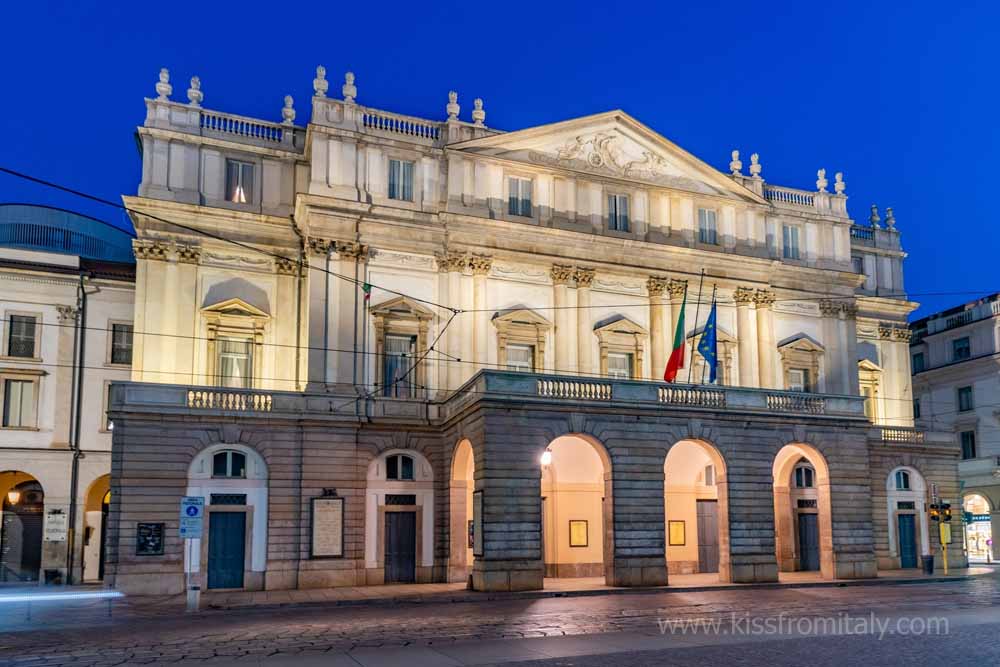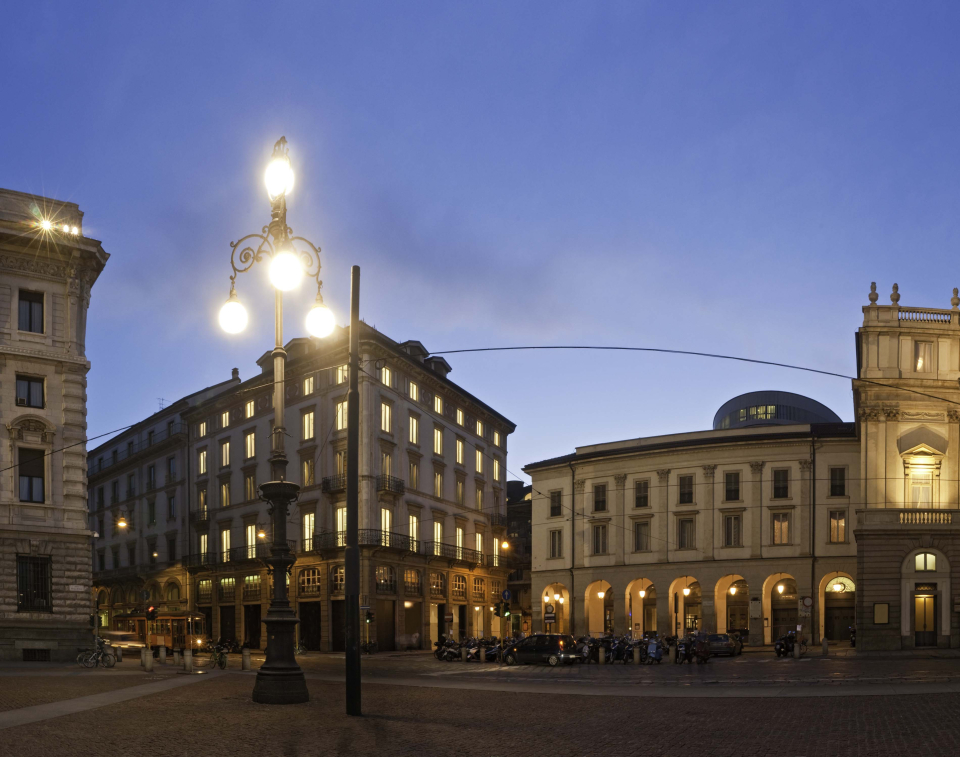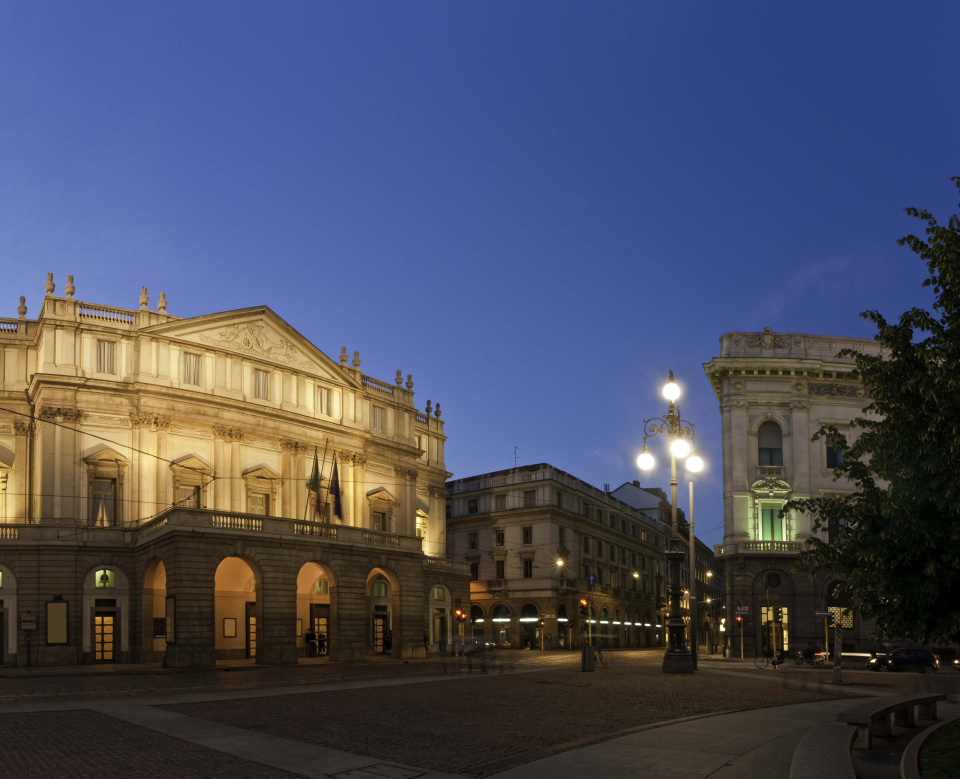
Teatro alla Scala is one of the most renowned opera houses in the world, learn more about this fascinating place in Milan
Teatro alla Scala, also known as La Scala Theater, is one of the most renowned opera houses in the world — a symbol of elegance, artistry, and Italian culture. Located in the heart of Milan, this historic opera theater stands as a monument to music, performance, and architectural beauty, attracting travelers and art lovers from across the globe.
A Cultural Icon in the Heart of Milan
There is little need to introduce Teatro alla Scala, or the La Scala Theatre, as it’s affectionately known. Few theaters on earth rival its prestige, history, and magic. Nestled near Via Montenapoleone, one of the world’s most iconic fashion streets, the La Scala Opera Theater perfectly reflects Milan’s blend of sophistication, creativity, and grandeur.
Just steps away, visitors can explore luxury boutiques from Armani, Prada, Gucci, and Bulgari, as well as world-class shoe designers like Giuseppe Zanotti and Jimmy Choo, and jewelers such as Damiani. Together, they form the ideal complement to La Scala’s artistic brilliance — the musical heart of Italy’s fashion capital.
The Spirit of La Scala: Where Music Meets Passion
Since its opening, La Scala Theater has hosted the world’s most beloved musicians, singers, composers, conductors, and directors. Equally famous is its passionate audience — the loggionisti, seated high in the upper galleries, known for their deep knowledge of opera and their expressive reactions.
These discerning fans are often described as the true tastemakers of opera. If a singer or conductor fails to meet their expectations, the loggionisti have been known to whistle or even stop performances mid-way — sometimes forcing an understudy to step in and finish the show. Their passionate involvement has become part of the theater’s living legend.
A Grand Beginning: The Birth of Teatro alla Scala
Teatro alla Scala was founded under the patronage of Empress Maria Theresa of Austria and designed by neoclassical architect Giuseppe Piermarini to replace the Royal Ducal Theatre, which burned down in 1776. The new building opened in 1778 as the Nuovo Regio Ducale Teatro alla Scala ("New Royal-Ducal Theatre").
The name alla Scala comes from the deconsecrated church Santa Maria alla Scala, upon whose site the theater was built. From its earliest days, it has symbolized Milan’s passion for performance and artistic excellence.
Gallery
Architecture and Acoustics: A Theater Like No Other
With its 3,000+ seats and enormous stage, La Scala Theater was — and remains — a masterpiece of design. Its scale was extraordinary compared to other European theaters of the time, and its exceptional acoustics make it one of the best opera houses in the world. Remarkably, performances at La Scala are still non-amplified, relying entirely on the natural projection of the human voice.
A Stage for the Great Masters of Opera
In 1812, Gioachino Rossini became Italy’s most celebrated composer, while La Scala established itself as the country’s premier stage for opera seria. Soon after, the bel canto era flourished with the works of Gaetano Donizetti and Vincenzo Bellini. Donizetti’s distinctive, challenging vocal lines influenced the legendary Giuseppe Verdi, who would go on to define Italian opera and make La Scala Theater world-famous.
The Golden Ages of Conductors and Voices
Over the centuries, Teatro alla Scala has been home to an extraordinary lineage of conductors — including Arturo Toscanini, Tullio Serafin, Claudio Abbado, Riccardo Muti, Daniel Barenboim, and Riccardo Chailly.
Under their batons, audiences experienced unforgettable performances by opera legends such as:
-
Maria Callas
-
Luciano Pavarotti
-
Plácido Domingo
-
Joan Sutherland
-
Mirella Freni
-
Renata Scotto
-
Enrico Caruso
-
Cecilia Bartoli
-
Renato Bruson
Their artistry and passion helped shape La Scala into one of the most respected and beloved theaters in the world.
Celebrating Sant’Ambrogio: The "Prima" and the Opening Night Tradition
Each year, December 7th marks the official opening of La Scala’s theatrical season, coinciding with Sant’Ambrogio Day, a Milanese holiday that honors the city’s patron saint. This day is one of the most important dates on the city’s cultural calendar — and for Italy as a whole — because it is also the date of "La Prima della Scala", or La Scala’s Opening Night.
The Prima is much more than an opera performance — it is a prestigious social and cultural event that draws immense media attention. The audience is often filled with celebrities, artists, political figures, and cultural icons from Italy and abroad. Television networks broadcast the evening live, while newspapers and magazines across Europe cover the news — from the performance itself to the red-carpet arrivals and fashion.
This unique blend of high culture and public spectacle makes the Prima one of Milan’s most glamorous nights of the year. The evening showcases the excellence of Italian opera and design, uniting the country’s two great passions: music and style.
The spotlight and visibility of La Prima have also made it a symbolic platform for social and political expression. Over the years, protesters have occasionally used the event’s high media profile to make statements about social issues or government policies, adding an additional layer of drama — both on and off the stage.
The festivities around December 7th extend throughout the long weekend, overlapping with the Fiera degli Oh Bej! Oh Bej!, Milan’s famous traditional Christmas market held near Castello Sforzesco. The combination of art, tradition, and holiday celebration transforms the city into a vibrant hub of culture and festivity, making early December one of the most exciting times to visit Milan
Visiting Teatro alla Scala: Tips for Travelers
If you’re planning to attend a performance at Teatro alla Scala Theater, it’s essential to book tickets well in advance, as shows often sell out quickly.
Find all season information, schedules, and ticket sales at the official website: www.teatroallascala.org
Even if you’re not attending an opera or concert, you can still visit Teatro alla Scala during the day. Inside the same building, you’ll find the Museo Teatrale alla Scala (La Scala Theatre Museum) — one of Milan’s most fascinating cultural attractions.
Dress Code and Etiquette
La Scala maintains a refined dress code that reflects its elegance and tradition. While formal wear is not mandatory, guests are expected to dress appropriately and respectfully. For details about attire, premieres, and upcoming events, visit: Preparing Your Visit
Experience La Scala as Part of a Private Milan Tour
For travelers seeking a truly personalized experience, a visit inside La Scala Theater can be included as part of a private guided tour of Milan. This is the ideal way to explore the city’s most iconic landmarks — from the Duomo di Milano and Galleria Vittorio Emanuele II to the La Scala Museum — with the insight of a local expert.
You’ll enjoy exclusive access, historical context, and the chance to see one of the world’s greatest opera theaters up close, even when no performance is scheduled.
Interested in adding La Scala to your Milan itinerary? Get in touch with us to learn more about custom private tours and unique cultural experiences in Milan.
Why You Should Visit Teatro alla Scala
Whether you attend a grand opera beneath its glittering chandeliers or explore the theater’s museum during the day, a visit to Teatro alla Scala in Milan is a journey through centuries of artistry, elegance, and history. It’s an unmissable experience for anyone who loves music, architecture, or Italian culture.




